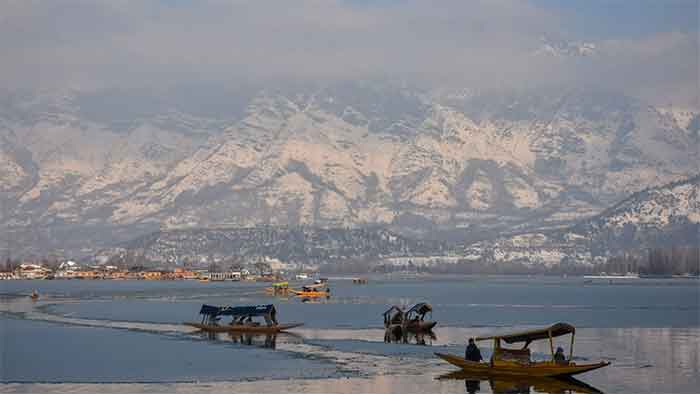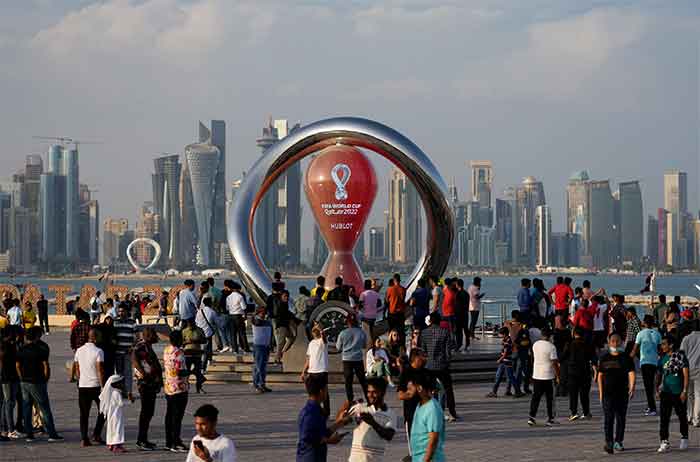
The recreational areas of West Sikkim in India face transportation difficulties for tourists due to the lack of public transport and shared taxi options. To address this issue and attract more visitors to the region, it is crucial to provide taxi-sharing services in West Sikkim’s tourist destinations. Immediate action and planning are required to improve tourist-friendly modes of transportation, considering the growing demand for taxi-sharing services.
Sikkim, located in the eastern Himalayas, has a thriving tourism industry that plays a significant role in the state’s overall development. It accounts for 8.93% of the state GDP of Sikkim, as reported by the Department of Tourism, Government of Sikkim, and Annual Report 2010-2011[i].
Tourism is closely linked to transportation, and a well-functioning transportation system is essential for tourism growth. Seamless connectivity to tourism destinations and transportation infrastructure can significantly improve visitor experience, as recognized by the 2022 Draft Tourism Policy[ii].
Transportation infrastructure is critical for the tourism industry, as it determines tourists’ flow and overall experience. Convenient access to tourist attractions is crucial in attracting visitors [iii]. The availability, effectiveness, and connection of transportation significantly impact how a place develops physically and how visitors move about within destinations[iv].
When choosing recreational sites, individuals often prioritize convenience and accessibility. In the context of tourism, tourists may have different transportation preferences. Some tourists may choose bus transportation, some prefer car sharing, and others want private vehicles. However, most visitors rely on the area’s public transportation network, which can impact their travel destinations. Travellers are drawn to tourist sites with efficient and convenient public transportation systems. For instance, one of the services offered to tourists for sightseeing trips is the tour bus service. Tourists who depend on a bus service might be unable to reach their destination if the service has poor network connectivity or limited service hours. As a result, tourists may need to consider alternate locations due to these restrictions. However, tourists’ needs differ from commuters[v].
Shared Mobility
Shared-use mobility systems have existed since the 1960s in Europe and have become increasingly popular. These systems have effectively reduced the reliance on private vehicles by integrating them into urban public transportation systems[vi]. Services such as car-sharing, bike-sharing, on-demand ride services, and ride-sharing fall into the category of shared mobility services. Many examples of shared mobility solutions exist, but Uber and Ola stand out since they operate in more than 300 and 110 cities worldwide, respectively[vii]. Shared mobility systems reduce reliance on private vehicles, alleviate traffic congestion, and lower emissions[viii].
Taxi sharing
Taxi sharing, in particular, offers several benefits, such as lowering travel expenses, reducing traffic emissions, easing traffic congestion by encouraging multiple customers to share a single taxi, providing comfort and convenience[ix], and could resolve the challenges caused by a shortage of parking spaces[x]. Taxi sharing is a solution to meet high trip demand and reduce dissatisfaction with public transportation. Sharing a taxi benefits passengers by reducing wait times and travel costs. It becomes a win-win scenario for everyone involved when passengers share a taxi, lowering travel expenses[xi].
Studies on car-sharing indicate its importance in addressing sustainability challenges; however, only some written pieces specifically address car-sharing in India. Compared to private vehicles, there are more works globally on car-sharing[xii] [xiii] [xiv]. The studies in India examine the inefficiency of car-sharing under specific rules[xv], the importance of providing access to mobility services for low-income consumers[xvi], the role of car-sharing in India’s tourism industry and sustainable transport growth[xvii], and energy-efficient policies[xviii].
However, there is a dearth of work on shared taxi services for tourists in recreational destinations. In the western part of Sikkim, a shortage of shared taxi services negatively impacts tourism in the area.
West Sikkim is known for its ancient Buddhist monasteries, such as Sangachoeling and Pemayangtse, revered by Buddhists and people of other faiths for their spiritual tranquillity. Kanchenjunga National Park is home to over 550 species of birds, animals, reptiles, and insects, making it a must-visit destination for nature lovers. The Barsey Rhododendron Sanctuary is another beautiful attraction in the area. Additionally, West Sikkim boasts several exciting places to visit, including Pelling, Rabdentse Ruins, Chenrezig statue, India’s first Glass Skywalk in Pelling, Dubdi Monastery, Tashiding Monastery, Yuksom, Darap, Barsey, Uttarey, Okhrey, Hee, Yangtey, Biksthang, Kanchenjunga National Park, Dzongri Trek, Khecheolpalri Lake, Rinchenpong, and several waterfalls like Kangchenjunga Waterfalls, Phamrong Waterfalls, Rimbi Waterfalls, and Changey Waterfalls.
In the recreational areas of western Sikkim, tourists encounter transportation challenges attributed to the inadequate availability of public transportation and shared taxi services. Subsequent discussions with tourists have highlighted the importance of shared taxi services in facilitating access to tourist destinations. Additionally, many tourists have reported exorbitant fares when reserving vehicles, with limited alternatives for more affordable modes of transportation.
This issue extends beyond the tourist population, as residents experience comparable difficulties when commuting to nearby recreational spots or accessing markets at a relatively greater distance.
Integrating taxi-sharing services in tourist destinations elevates the overall tourist experience. While a destination’s scenic beauty and reputation are paramount, providing high-quality taxi-sharing services is equally crucial. It is imperative to recognize the demand for shared taxi services in tourist areas, preferably through practical implementation, to offer efficient and dependable transportation alternatives to tourists. Through the implementation of taxi-sharing services in tourist destinations, local governments and tourism organizations can foster sustainable tourism practices, alleviate congestion and air pollution, and enhance the overall quality of the tourist experience.
Shared electric vehicles: a viable option for tourist transportation?
Electric car sharing has shown high tourist demand for local transportation in tourist destinations[xix].Nevertheless, charging infrastructure remains challenging[xx]. Expanding the availability of charging stations can significantly improve the service quality and adoption of electric vehicles in tourism[xxi].
Providing shared taxi services in areas not traditionally associated with tourism can yield multiple benefits, including attracting more tourists, addressing parking challenges, mitigating the impacts of overcrowding in popular areas, and dispersing tourists to other regions. Consequently, this can stimulate local economic growth and promote travel and tourism. In order to enhance tourist-friendly transportation options, it is crucial to strategically plan and implement shared taxi services, particularly considering the increasing significance of such services.
Furthermore, adopting shared electric vehicles as a viable mode of transportation for tourists can reduce vehicle emissions. Himachal Pradesh serves as an exemplar in this regard. It is actively pursuing a transition to electric vehicles by formulating an electric vehicle policy to achieve a complete transition to electric vehicles by 2030 in alignment with the UNSDG’s (United Nations Sustainable Development Goals)[xxii].
Pema Choden Bhutia is a Research Scholar at Madras Institute of Development Studies, Chennai. Her research interests include tourism, ecotourism, environmental valuation techniques and tourist preferences.
Email: [email protected]
[i] Department of Tourism, Government of Sikkim, and Annual Report 2010–2011
[ii] Draft National Tourism Policy 2022.
[iii] Transport for Tourism. Retrieved 10th May 2023, from https://nios.ac.in/media/documents/tourism_337_courseE/337_Tourism_Eng/337_Tourism_Eng_L5.pdf
[iv] OECD (2016). Retrieved 12th May 2023, from https://www.oecd.org/industry/tourism/2016 – Policy paper on Intermodal Connectivity for Destinations.pdf
[v] Rohani, M., Wijeyesekera, D., & Abd Karim, A. (2013). Bus Operation, Quality Service and The Role of Bus Provider and Driver. Procedia Engineering, 53, 167–178. https://doi.org/10.1016/j.proeng.2013.02.022
[vi] Lukasiewicz, A., Sanna, V. S., Diogo, V. L. A. P., & Bernát, A. (2022). Shared Mobility: A Reflection on Sharing Economy Initiatives in European Transportation Sectors. In V. Česnuitytė, A. Klimczuk, C. Miguel, & G. Avram (Eds.), The Sharing Economy in Europe (pp. 89–114). Springer International Publishing. https://doi.org/10.1007/978-3-030-86897-0_5
[vii] Narayanan, S., Chaniotakis, M., & Antoniou, C. (2020). Shared autonomous vehicle services: A comprehensive review. Transportation Research Part C Emerging Technologies, 111, 255–293. https://doi.org/10.1016/j.trc.2019.12.008
[viii] Laya, & Vyas. (2021, March 24). ERICSSON BLOG. Shared Mobility: Why ‘They’ Should All Be Sharing Their Cars. Retrieved May 6, 2023, from
https://www.ericsson.com/en/blog/2021/3/shared-mobility-they-should-share-cars
[ix] Qiu, J., Huang, K., & Hawkins, J. (2022). The taxi sharing practices: Matching, routing and pricing methods. Multimodal Transportation, 1(1), 100003. https://doi.org/10.1016/j.multra.2022.100003
[x] Alfian, G., Rhee, J., Kang, Y.-S., & Yoon, B. (2015). Performance Comparison of Reservation Based and Instant Access One-Way Car Sharing Service through Discrete Event Simulation. Sustainability, 7(9), 12465–12489. https://doi.org/10.3390/su70912465
[xi] Huang, K., Liu, F., Hu, Y., & Liu, Z. (2018). An Analysis of the Taxi-Sharing Organizing and Pricing. 263–276. https://doi.org/10.1007/978-981-10-3551-7_20
[xii] Becker, H., Ciari, F., & Axhausen, K. W. (2017). Comparing car-sharing schemes in Switzerland: User groups and usage patterns. Transportation Research Part A: Policy and Practice, 97, 17–29. https://doi.org/10.1016/j.tra.2017.01.004
[xiii] Shaheen, S., & Cohen, A. (2012). Car-sharing and Personal Vehicle Services: Worldwide Market Developments and Emerging Trends. International Journal of Sustainable Transportation – INT J SUSTAIN TRANSP, 7. https://doi.org/10.1080/15568318.2012.660103
[xiv] Das, D., Kalbar, P., & Velaga, N. (2021). Framework for comparative evaluation of car-sharing alternatives for urban and suburban regions: A case study of Mumbai. Journal of Urban Planning and Development, 295, 126321. https://doi.org/10.1061/(ASCE)UP.1943-5444.0000705
[xv] Mohan, D., Tiwari, G., Goel, R. and Lahkar, P., (2017). Evaluation of odd–even day traffic restriction experiments in Delhi, India. Transportation Research Record, 2627(1), pp.9-16.
[xvi] Moser, R., Schäfers, T., & Narayanamurthy, G. (2017). Non-ownership mobility services for low-income consumers in India: An empirical investigation. In Navigating the future: innovative technologies and methodologies in operations management: Conference abstracts of the Production and Operations Management Society International Conference
[xvii] Singh, S. (2017). Car sharing for sustainable tourism. Tourism Recreation Research, 42, 1–6. https://doi.org/10.1080/02508281.2017.1367897
[xviii] Menon, B.G. and Mahanty, B., (2015). Assessing the effectiveness of alternative policies in conjunction with energy efficiency improvement policy in India. Environmental Modeling & Assessment, 20(6), pp.609624.
[xix] Nikiforiadis, A., Ayfantopoulou, G., Basbas, S., & Stefanidou, M. (2022). Examining tourists’ intention to use electric vehicle-sharing services. Transportation Research Interdisciplinary Perspectives, 14, 100610. https://doi.org/10.1016/j.trip.2022.100610
[xx] Jung, J., Jayakrishnan, R., & Choi, K. (2017). Dually sustainable urban mobility option: Shared-taxi operations with electric vehicles. International Journal of Sustainable Transportation, 11(8), 567–581. https://doi.org/10.1080/15568318.2015.1092057
[xxi] Che, S., Chen, Y., & Wang, L. (2023). Electric Vehicle Charging Station Layout for Tourist Attractions Based on Improved Two-Population Genetic PSO. Energies, 16(2), 983. https://doi.org/10.3390/en16020983
[xxii] IANS. (2023, February 20). Himachal gives green push by switching official vehicles with electric ones – ET EnergyWorld. ETEnergyworld.com. Retrieved May 6, 2023, from https://energy.economictimes.indiatimes.com/news/power/himachal-gives-green-push-by-switching-official-vehicles-with-electric-ones/98077470

















































